(−2)+(−5)+(−6) ________ (−3)+(−4)+(−6)
To solve the problem (−2)+(−5)+(−6) and compare it with (−3)+(−4)+(−6), we will follow these steps:
Step 1: Calculate the first expression (−2)+(−5)+(−6)
1. Start with −2.
2. Add −5 to −2:
\(
-2 + (-5) = -2 - 5 = -7
\)
3. Now add −6 to −7:
\(
-7 + (-6) = -7 - 6 = -13
\)
So, (−2)+(−5)+(−6)=−13.
Step 2: Calculate the second expression (−3)+(−4)+(−6)
1. Start with −3.
2. Add −4 to −3:
\(
-3 + (-4) = -3 - 4 = -7
\)
3. Now add −6 to −7:
\(
-7 + (-6) = -7 - 6 = -13
\)
So, (−3)+(−4)+(−6)=−13.
Step 3: Compare the two results
Now we compare the two results:
- The first expression equals −13.
- The second expression also equals −13.
Conclusion
Since both expressions are equal, we can fill in the blank with an equal sign:
\(
(-2) + (-5) + (-6) \quad = \quad (-3) + (-4) + (-6)
\)
2. Add −5 to −2:
\(
-2 + (-5) = -2 - 5 = -7
\)
3. Now add −6 to −7:
\(
-7 + (-6) = -7 - 6 = -13
\)
2. Add −4 to −3:
\(
-3 + (-4) = -3 - 4 = -7
\)
3. Now add −6 to −7:
\(
-7 + (-6) = -7 - 6 = -13
\)
- The first expression equals −13.
- The second expression also equals −13.
\(
(-2) + (-5) + (-6) \quad = \quad (-3) + (-4) + (-6)
\)
Topper's Solved these Questions
- BOOK - NCERT EXEMPLARCHAPTER - INTEGERS EXERCISE - Exercise42videos
INTEGERS
- BOOK - NCERT EXEMPLARCHAPTER - INTEGERS EXERCISE - Exercise (Fill in the blanks to make the statements true:)8videos
INTEGERS
- BOOK - NCERT EXEMPLARCHAPTER - GEOMETRYEXERCISE - Exercise56videos
GEOMETRY
- BOOK - NCERT EXEMPLARCHAPTER - MENSURATIONEXERCISE - Exercise (True or False)7videos
MENSURATION
Similar Questions
For teaching the concept of probability, Mrs. Verma decided to use two dice. Shet took a pair of die and write all the possible outcomes on the blackboard. All possible outcomes wave:
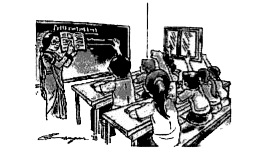
(1,1), (1,2), (1,3), (1,4), (1,5), (1,6)
(2,1), (2,2), (2,3), (2,4), (2,5), (2,6)
(3,1), (3,2), (3,3), (3,4), (3,5), (3,6)
(4,1), (4,2), (4,3), (4,4), (4,5), (4,6)
(5,1), (5,2), (5,3), (5,4), (5,5), (5,6)
(6,1), (6,2), (6,3), (6,4), (6,5), (6,6)
The probability that 6 will come up on both dice isView SolutionFor teaching the concept of probability, Mrs. Verma decided to use two dice. Shet took a pair of die and write all the possible outcomes on the blackboard. All possible outcomes wave:
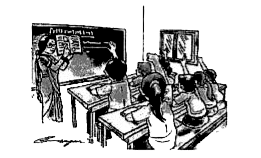
(1,1), (1,2), (1,3), (1,4), (1,5), (1,6)
(2,1), (2,2), (2,3), (2,4), (2,5), (2,6)
(3,1), (3,2), (3,3), (3,4), (3,5), (3,6)
(4,1), (4,2), (4,3), (4,4), (4,5), (4,6)
(5,1), (5,2), (5,3), (5,4), (5,5), (5,6)
(6,1), (6,2), (6,3), (6,4), (6,5), (6,6)
The probability that 5 will come up at least once is:View Solution
Knowledge Check
- Question 1 - Select One
556+[223−[334(345÷912)]]
A7B223C447D436
For teaching the concept of probability, Mrs. Verma decided to use two dice. Shet took a pair of die and write all the possible outcomes on the blackboard. All possible outcomes wave:
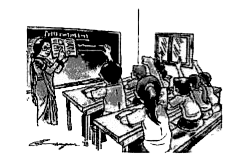
(1,1), (1,2), (1,3), (1,4), (1,5), (1,6)
(2,1), (2,2), (2,3), (2,4), (2,5), (2,6)
(3,1), (3,2), (3,3), (3,4), (3,5), (3,6)
(4,1), (4,2), (4,3), (4,4), (4,5), (4,6)
(5,1), (5,2), (5,3), (5,4), (5,5), (5,6)
(6,1), (6,2), (6,3), (6,4), (6,5), (6,6)
The probability that 4 will not come up on either of them isView SolutionFor teaching the concept of probability, Mrs. Verma decided to use two dice. Shet took a pair of die and write all the possible outcomes on the blackboard. All possible outcomes wave:
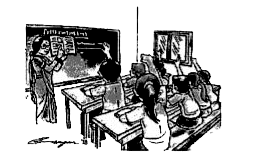
(1,1), (1,2), (1,3), (1,4), (1,5), (1,6)
(2,1), (2,2), (2,3), (2,4), (2,5), (2,6)
(3,1), (3,2), (3,3), (3,4), (3,5), (3,6)
(4,1), (4,2), (4,3), (4,4), (4,5), (4,6)
(5,1), (5,2), (5,3), (5,4), (5,5), (5,6)
(6,1), (6,2), (6,3), (6,4), (6,5), (6,6)
The probability that both numbers comes up are even, isView SolutionFor teaching the concept of probability, Mrs. Verma decided to use two dice. Shet took a pair of die and write all the possible outcomes on the blackboard. All possible outcomes wave:
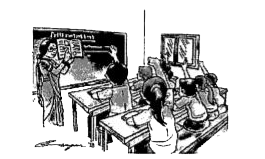
(1,1), (1,2), (1,3), (1,4), (1,5), (1,6)
(2,1), (2,2), (2,3), (2,4), (2,5), (2,6)
(3,1), (3,2), (3,3), (3,4), (3,5), (3,6)
(4,1), (4,2), (4,3), (4,4), (4,5), (4,6)
(5,1), (5,2), (5,3), (5,4), (5,5), (5,6)
(6,1), (6,2), (6,3), (6,4), (6,5), (6,6)
The probabiliyt that both numbers comes up are prime numbers, isView Solutionsolve it :
(ii) −35×−35×−35×−35
(iii) −92×42×−42×−42×−42×−42
(iv) −53×−53×−53×−53
(v)−62×−62×−62×−62×−62View Solution2x3−4x2−6x3x5−6x4−6x3−9x2
View Solution12+(−34)+56=(−34)+12+......
View SolutionIf A={1,2,3},B={3,4}andC={4,5,6},then prove that(A×B)∪(A×C) ={(1,3),(1,4),(1,5),(1,6),(2,3),(2,4),(2,5),(2,6),(3,3),(3,4),(3,5),(3,6)}
View Solution

